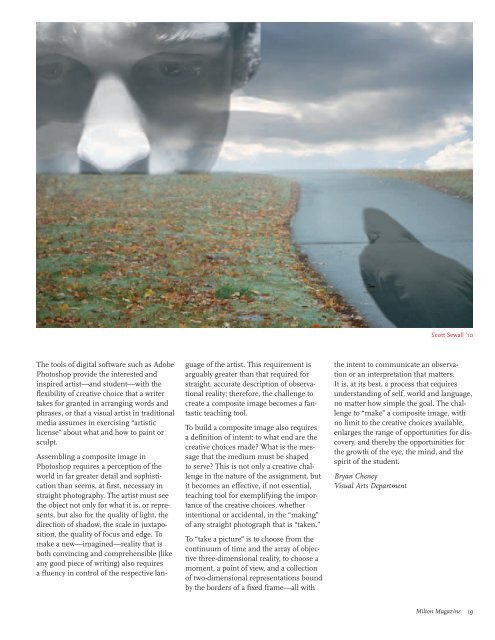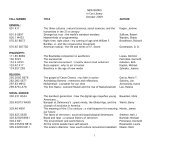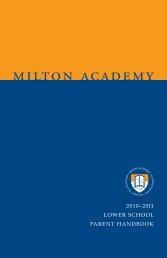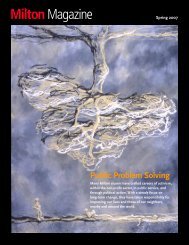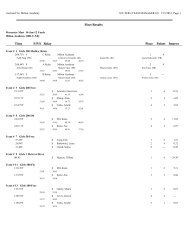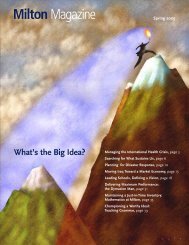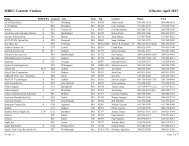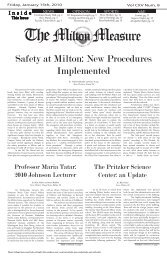Milton Magazine - Milton Academy
Milton Magazine - Milton Academy
Milton Magazine - Milton Academy
- No tags were found...
You also want an ePaper? Increase the reach of your titles
YUMPU automatically turns print PDFs into web optimized ePapers that Google loves.
Scott Sewall ’10The tools of digital software such as AdobePhotoshop provide the interested andinspired artist—and student—with theflexibility of creative choice that a writertakes for granted in arranging words andphrases, or that a visual artist in traditionalmedia assumes in exercising “artisticlicense” about what and how to paint orsculpt.Assembling a composite image inPhotoshop requires a perception of theworld in far greater detail and sophisticationthan seems, at first, necessary instraight photography. The artist must seethe object not only for what it is, or represents,but also for the quality of light, thedirection of shadow, the scale in juxtaposition,the quality of focus and edge. Tomake a new—imagined—reality that isboth convincing and comprehensible (likeany good piece of writing) also requiresa fluency in control of the respective languageof the artist. This requirement isarguably greater than that required forstraight, accurate description of observationalreality; therefore, the challenge tocreate a composite image becomes a fantasticteaching tool.To build a composite image also requiresa definition of intent: to what end are thecreative choices made? What is the messagethat the medium must be shapedto serve? This is not only a creative challengein the nature of the assignment, butit becomes an effective, if not essential,teaching tool for exemplifying the importanceof the creative choices, whetherintentional or accidental, in the “making”of any straight photograph that is “taken.”To “take a picture” is to choose from thecontinuum of time and the array of objectivethree-dimensional reality, to choose amoment, a point of view, and a collectionof two-dimensional representations boundby the borders of a fixed frame—all withthe intent to communicate an observationor an interpretation that matters.It is, at its best, a process that requiresunderstanding of self, world and language,no matter how simple the goal. The challengeto “make” a composite image, withno limit to the creative choices available,enlarges the range of opportunities for discovery,and thereby the opportunities forthe growth of the eye, the mind, and thespirit of the student.Bryan CheneyVisual Arts Department<strong>Milton</strong> <strong>Magazine</strong> 19


